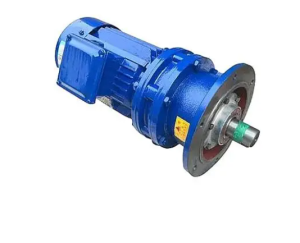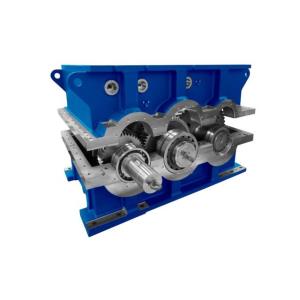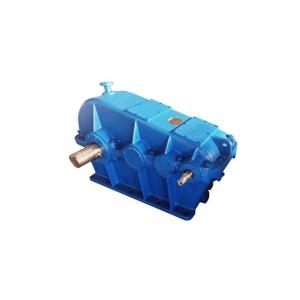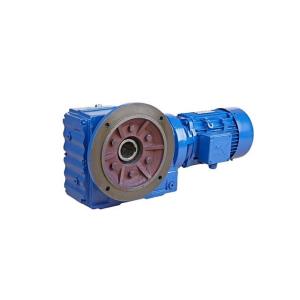The difference between cylindrical gear reducer and bevel gear reducer
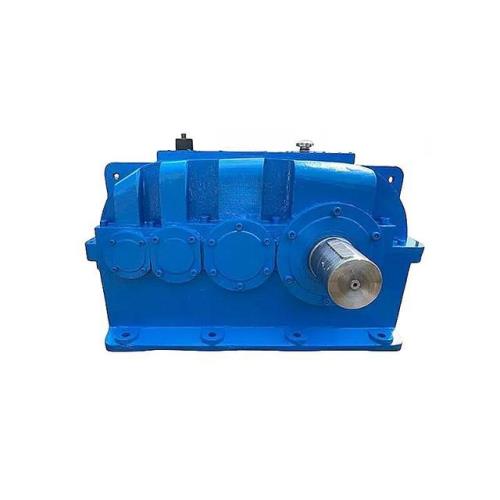
There are significant differences between WPEDKA120-175,WPEDKA135-200,WPEDKA155-250,WPEO40-70,WPEO50-80 cylindrical gear reducers and bevel gear reducers in terms of transmission principles, gear shapes, and force conditions. This article will provide a detailed introduction to the differences between these two types of reducers, helping readers better understand and choose to use them.
1、 Transmission principle
A cylindrical gear reducer refers to a reducer that uses cylindrical gears as the transmission medium. By reducing the input speed to increase the output speed, the purpose of deceleration is achieved. A cylindrical gear reducer usually consists of a pair of cylindrical gears that mesh with each other, one of which is the input shaft and the other is the output shaft. The driving gear on the input shaft and the driven gear on the output shaft transmit power through meshing, thereby achieving the effect of deceleration.
A bevel gear reducer is a reducer that uses bevel gears as the main transmission medium. A bevel gear reducer usually consists of a pair of meshing bevel gears, one of which is the driving gear on the input shaft and the other is the driven gear on the output shaft. Through the meshing of bevel gears, the rotational motion of the input shaft is converted into the rotational motion of the output shaft, while achieving the effect of deceleration.
2、 Gear shape
The driving gear and driven gear of the cylindrical gear reducer are both cylindrical, and the gear surface is parallel to the axis. This gear shape ensures smooth transmission and is suitable for high-speed and high-power transmission systems.
The driving gear and driven gear of the bevel gear reducer are both conical, and the gear surface intersects with the axis. Bevel gears have a larger contact area and higher load-bearing capacity, making them suitable for low-speed, high torque transmission systems.
3、 Force situation
The driving gear and driven gear of the cylindrical gear reducer are both cylindrical, and the force is relatively uniform. Therefore, cylindrical gear reducers have good smoothness and low noise during the transmission process.
The driving gear and driven gear of the bevel gear reducer are both conical, and the force is mainly concentrated in the smaller part of the tooth width. Therefore, bevel gear reducers have high torque and strong impact resistance during the transmission process.
4、 Applicable scope
The cylindrical gear reducer is suitable for high-speed and high-power transmission systems, with characteristics such as smooth transmission and low noise. For example, in the fields of industrial robots, CNC machine tools, etc., cylindrical gear reducers are widely used to achieve functions such as speed control and position positioning of servo motors.
The bevel gear reducer is suitable for low-speed and high torque transmission systems, with characteristics such as large contact area and high load-bearing capacity. For example, in the fields of engineering machinery, mining machinery, etc., bevel gear reducers are widely used to achieve functions such as speed control and torque output of hydraulic motors.
In summary, there are significant differences between cylindrical gear reducers and bevel gear reducers in terms of transmission principles, gear shapes, and force conditions. In practical applications, it is necessary to choose the appropriate type of reducer based on the specific working environment and requirements.
-
2024-04-12In the modern mechanical industry, the application of reducers is quite extensive, among which the TBW9255L planetary cycloidal pinwheel reducer, as a high...Details +
-
Characteristics and detailed introduction of H3HH8-71-G gearbox
2024-04-12The H3HH8-71-G gearbox is a widely used transmission device in the industrial field, characterized by high precision, high strength, and high efficiency. This...Details + -
ZS165 series cylindrical gear reducer achieves efficient and stable power transmission device
2024-04-11In the modern industrial field, a WPWV175,WPWV200,WPWV250,WPWDV40,WPWDV50 reducer is a very important power transmission device used to reduce the output speed ...Details + -
Structural features and advantages of K series spiral bevel gear reducer
2024-04-11WPEDS60-100,WPEDS70-120,WPEDS80-135,WPEDS80-147,WPEDS100-155 Gear reducer is a widely used mechanical equipment in the industrial field, among which the K...Details +



